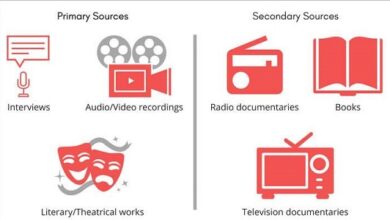How to publish your scientific article/Where to find periodicals/definition
The scientific journal is nothing more than a scientific journal . But these aren’t the magazines we find on newsstands, okay? How to publish your scientific article?
The journals to which I refer have a purely scientific character and are also called periodicals when they tend to have recurring publications .
In this way, they bring together scientific articles of the most varied types, written by researchers, scientists and students.
Because of this, journals are like a high-quality collection and consulted by many other researchers.
For this, the evaluation criteria for publications in journals are usually very strict .
Thus, having an article published in this medium brings even more authority and visibility to the person who wrote it, allowing other people to use it as a reference for the development of research.
In this way, the journal is a great choice for all types of writers, whether they are beginners or who already have a long academic career. How to publish your scientific article?
Times have changed, haven’t they? And for science mainly!
In the past, access to scientific journals was only physical.
However, over the years and the massification of the internet, it is possible to consult journals online .
But they’re not loose anywhere on the internet, okay? Beware of journals that are not indexed!
That is, to ensure quality, protect access to articles and preserve their content online, journals are “stored” in so -called indexing databases.
In other words, indexers are trusted sites that gather a set of journal titles that have gone through a selection process.
Among the most common, we have: SciELO , Scopus and Google Scholar .
Shall we see a little about each one? How to publish your scientific article?
SciELO
SciElo, Scientific Electronic Library Online, is one of the leading digital libraries in Latin America.
In it, we have access to scientific productions from different countries, from articles to complete journals, with its own methodology for the elaboration, evaluation and storage of projects.
scopus
Scopus also delivers quality and well-rated content, including a well-known rating, the CiteScore , which we will address throughout the text.
This database is able to gather works from all over the world and from the most diverse subjects .
Academic Google
Who has never searched for content on Google and been directed to the academic section?
Well, Google Scholar also has several materials available, in addition to ease of use and its own classification of projects, the h5 Index . How to publish your scientific article?
Beware of predatory magazines!
Despite many options available, some journals lack scientific validity . Most of the time, there is no curation of the content, even providing fake surveys .
Therefore, to know if a journal is reliable, check the platforms mentioned above.
You’ve probably heard someone ask, “What is the Qualis of this journal?”
Qualis is typically the most popular tool for measuring the importance of an academic journal.
But did you know she’s not the only one? In fact, there is a kind of “hierarchy”:
- Qualis is a calculation made by Capes to measure the importance of the journal in Brazilian scientific production;
- Bibliometric indicators , indices calculated by the indexing bases, are part of the Qualis calculation and also measure the importance of a journal. How to publish your scientific article?
In other words, bibliometric indicators measure the performance of scientific journals based on the number of citations that the articles published in them received.
Finally, this number is used by Capes on the basis of the Qualis Capes calculation.
But calm down! If you don’t know these terms, I’ll explain all about them.
Shall we start with bibliometric indicators ?
There are several types of classifications and, among the best known, we have: Impact Factor , CiteScore and the h5 Index .
Impact factor
The Impact Factor is a calculation of the average number of citations made to articles in a journal in a given period of time.
However, it is intended only for journals that are in the Web of Science , an indexing base that brings together scientific productions from all over the world.
Thus, to be able to index your journal there, it must, at least, have a title, a publisher, a url, presence of a peer review policy and most importantly: the ISSN .
The ISSN (International Standard Serial Number) is a numbering that will register and individualize a publication from another, valid only for recurring works , such as periodicals. How to publish your scientific article?
CiteScore
Like the Impact Factor, the CiteScore is also an indicator that measures the potency of a magazine.
The difference is that it is calculated by another indexing base: Scopus.
In practice, the calculation is very similar: the citations made between 2017 and 2020 are divided by the number of articles present in the journal registered in Scopus.
h5 index
Finally, we also have the h5 Index , which is the number referring to the citations of projects indexed in Google Scholar .
It works with the same counting idea as the other two, creating an average from the number of references made to articles in that journal.
Qualis Capes
We finally got to it! But, unlike the platforms mentioned above, Qualis Capes is not an indexing base.
In other words, it does not “store” bibliographic information on articles and there is no point in requesting the inclusion of your academic journal in Qualis.
In fact, it works as an evaluation tool for postgraduate programs in Brazil and is developed by the Coordination for the Improvement of Higher Education Personnel (Capes) .
In practice, there are two Qualis indicators: Qualis Periodicals (or the new one, Referência), which interests us here; and the Qualis Artistic Work Group / Event Classification , encompassing artistic productions and event proceedings . How to publish your scientific article?
In this case, Qualis Periodicals has international recognition and is responsible for evaluating the scientific production developed by postgraduate courses in the country.
For this, it admits different levels of classification for scientific journals, performing this calculation based on several factors , including bibliometric indicators.
After finishing your work, the first step is to look for magazines that have to do with your project, some have more general themes and others are very specific.
In the SciELO system, for example, you will find a list of those associated with the platform, where you can learn more about and even find out about the requirements for publication.
Therefore, when deciding to submit, your article will be evaluated for some aspects that vary from publisher to publisher.
Despite these differences, it is important to ensure content:
- Be objective and relevant ;
- Be innovative;
- Having had a previous evaluation by a teacher or specialist;
- Follow ABNT standards .
After submission, just wait for the response of your review. If you are rejected, try to align your work according to what was pointed out by the magazine and try again! How to publish your scientific article?
1. Pay attention to deadlines
As I already explained, if it’s a journal, it will have recurring posts . Therefore, it is interesting to pay attention to the publication and submission deadlines of each edition.
2. Check if the journal is really related to your work
The most important point for choosing the right magazine is to have a connection with your work. In other words, it makes sense that your research is within the theme of the scientific journal.
3. Also think about visibility
Defining the journal considering the number of subscribers is also something to consider.
By logic, the more users, the greater the possibility of your work being seen . And that’s every researcher’s dream, isn’t it? How to publish your scientific article?
4. Follow the journal’s requirements
Be aware of the instructions and requirements of each journal to follow them correctly and submit with greater chances of approval.
Every journal must indicate what the rules and forms of evaluation are .
5. Ensure the exclusivity of your work
If the journal you want to apply is online, your article must have the DOI , a digital object identifier.
It is responsible for making the files permanent on the internet , as it makes it possible to create a definitive link to a published digital document.
Thus, your work becomes unique, guaranteeing authenticity , ease of location and even counts and indicates the citations received .
6. How about taking the work out of the drawer?
Finally, you already know what a journal is, its benefits and how to publish your work, so there are no more excuses! How to publish your scientific article?
In addition to making the purchase of identifiers available , Even3 has a publication portal with several other services for you to join more than 70 thousand authors.

